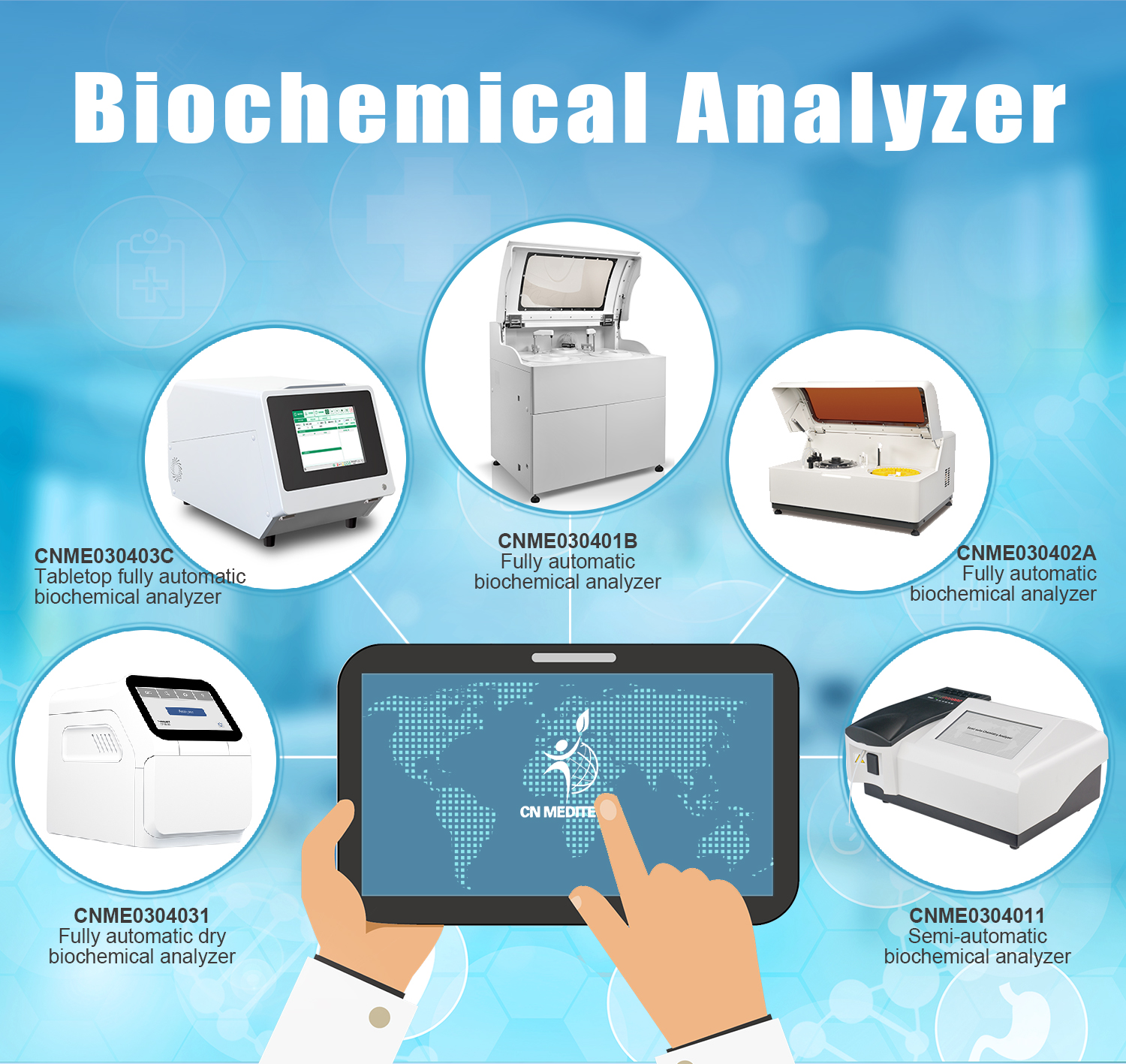- Home
- Products
- About Us
- News
- Service
- Contact Us
 Apr. 27, 2022
Apr. 27, 2022Biochemical analyzer is a commonly used instrument in medical institutions, it is mainly used to detect: liver function, kidney function, blood sugar, blood lipids, myocardial enzymes, ions. Biochemical analyzers are divided into semi-automatic and fully automatic. Many customers think that these two instruments are only different in the degree of automation. In fact, they are not. Both instruments have their own merits. The choice mainly depends on the user requirements of the unit.
1. Sample adding: The automatic biochemical analyzer has an automatic sample adding device to automatically add serum from the whole blood box. The semi-automatic biochemical analyzer requires manual sample addition.
2. Number of samples: the amount of each sample added to the automatic biochemical analyzer is about 200-300. There are 40 semi-automatic biochemical meters.
3. Measurement time: The measurement time of the automatic biochemical analyzer is generally 2 hours, the measurement number is 200 samples, and the detection time of each sample is 0.6 seconds. The semi-automatic biochemical analyzer's detection time for each sample is 5-6 minutes.
4. Cleaning function: The automatic biochemical analyzer has an automatic cleaning function. Semi-automatic biochemical analyzers require manual cleaning but are also very simple.
5. Sample size: the automatic biochemical analyzer can take multiple samples at a time. The semi-automatic biochemical analyzer can only take one sample at a time.
6. Speed measurement: the automatic biochemical instrument has a fast speed measurement, 240/300 speeds per hour.
7. Test results: The test results of the automatic biochemical analyzer are more accurate and convenient.
8. Equipped with facilities: the automatic biochemical instrument itself can adjust the temperature and only need a centrifuge. The semi-automatic biochemical analyzer must be equipped with a centrifuge and a constant temperature water bath.
9. The big difference: the automatic biochemical instrument requires little or no manual intervention, reducing human error. The semi-automatic biochemical instrument requires manual intervention, and the operating error is relatively large.
Under normal circumstances, clinics, pharmacies, CDCs, and other units mostly choose semi-automatic biochemical analyzers, while hospitals mostly choose fully automatic models and select instruments with parameters such as compound speed and sample position according to specific conditions.

Navigation
Get in Touch
